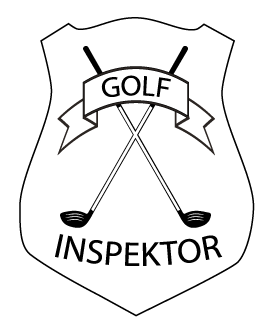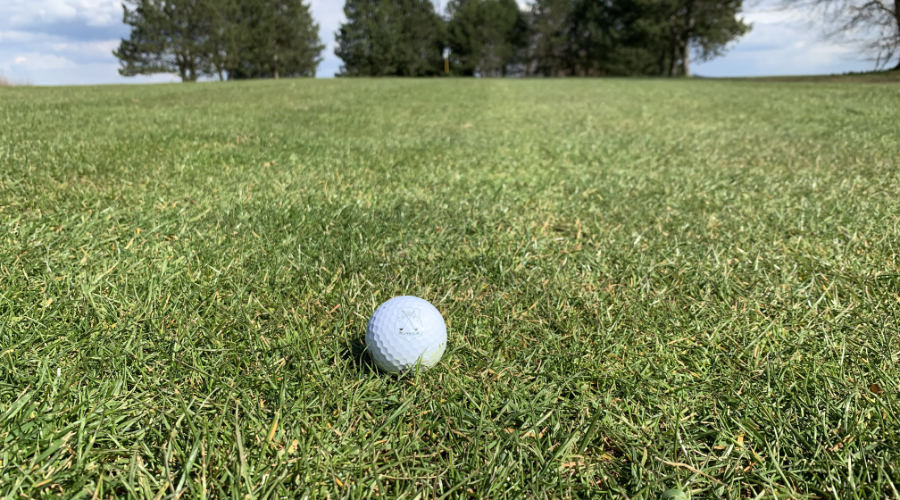Like any ball sport, golfers need a ball. Everyone knows the tennis ball, volleyball, basketball or soccer ball from school sports or from the baketball-court around the corner. But as a beginner, you usually only come into contact with a golf ball when you start playing that sport.
Now I’m not sure how big the differences between individual tennis balls or volleyballs can be, but in golf it’s anything but trivial. For example, I have never heard of tennis balls being fished out of a lake and reused. That’s right, in golf there is. There have also been unflattering reports of balls rotting underwater – environmental damage in the underwater world.
Also, I am not aware that there are basketballs specifically for short throws and specifically for longer throws.
That is different with golf.
A golf ball is a small white (or yellow, red or orange) ball with different inner layers and a cover or shell around it. There are a minimum of 2 layers, and a maximum of 5, as far as I know. Each layer is supposed to give the ball a special property. The sum and nature of all layers gives an overall property.
So when I hit the ball with my club, it reacts to it with appropriate reactions:
- At the moment of contact and at the point of impact, the ball is extremely depressed and speeds away from the hitting surface (i.e., resumes its actual round shape).
- It flies into the air – if I hit it correctly 😉 .
- It spins in the process – usually in the opposite direction to the target. So with backspin.
- If I hit the ball not only forward-directed, but also sideways, it gets an additional side-spin, which can ensure that the trajectory is unfortunately no longer straight (I like to compare this with a cut table tennis ball).
- The ball lands and rolls on; depending on the trajectory, terrain and backspin rate sometimes less and sometimes more.
Even someone who has little knowledge of physics and material science can imagine that balls with different construction and made of different material will differ from each other in:
- Flight distance,
- spin behavior and
- feel at the moment of contact with the club.
So this is exactly the reason why you should put more effort into choosing a ball than you thought as a beginner. Because depending on the individual way of hitting, a ball can support my game positively or not.
In this report, however, I don’t want to advise a certain type of ball or recommend a brand. This is all about the personal decision, but you have to make it first. Which is not so easy in practice.
Which golf ball should I choose?
Anyone who visits the relevant golf online stores will immediately find a section for golf balls. There it goes on with subdivisions in at least 8 different companies. These have then approx. again just as many ball sorts in the offer. So to test conscientiously, you would have to order 64 ball types. That would be then with an average price of 3, – USD already times scarcely 200, – USD! No, 2400,- USD, because you can normally only buy the balls in a pack of 12.
Ha ha, keep dreaming golf inspector.
So this way is not really feasible for the average person. But how does one go about it then?
Method 1 – we make an effort
I read the description of the balls and look for “recommendation for” and “my type of play”. So for example: This ball is suitable for players who do not reach high club head speed but still want to hit far. Or: … for players who like a lot of backspin so the ball stops as quickly as possible on the green.
Some manufacturers also have ball fittings that you fill out online and at the end a ball type comes out.
Based on this recommendation, you can order 2-3 ball types in small quantities and compare them. This is best done on the pitch and chip practice area for the short game. Of course, you can also check your putting feel on the putting green. Of course, as a layman, you can never tell if you really hit farther with one ball than the other without the proper technique.
But much more important is the control of the ball in front of and on the green. The few meters more in length do not make the game better in total.
Method 2 – quick and dirty 😉
Don’t feel like spending a lot of time in reading and trial and error? No problem, there is a solution for that too. The rule is quickly established: Always play the same type of ball. It doesn’t matter which one, because you will get used to its characteristics and adapt your game to it.
I can recommend this method especially to beginners, who usually like to accumulate a whole smorgasbord of balls in the main compartment of the bag – “look how many I’ve already found!”
In any case, collecting had one advantage: you unexpectedly come across a ball that somehow feels better than the others when you hit it. Then by all means order this kind and stick to it!
Method 3 – the professional
1-2 is not enough? Then go to a ball fitting. The big manufacturers like Titleist and Callaway etc. often offer ball fittings in addition to club demo days. There, the individual swing is measured exactly and the right ball is found. So watch out if the / a club in the vicinity advertises such events.
The disadvantage? Of course, you can’t make a comparison with other brands, but can only test their ball types.
And the Golf Inspector?
The question is easily answered:
I’m still playing the first ball I got in my first golf course lesson – a Wilson Stuff. The inspector doesn’t lose a ball!
No seriously, with Method 2 and a little frugality, I’ve stuck with the Vice-Golf brand and the “Tour” model. I like the discount system for ordering higher quantities of balls and the special offers for printing (sometimes even completely free). This way I can get a ball with great features around the green including my logo for about 1.70 USD. I wouldn’t get far with the big manufacturers.
Click here to go directly to the online fitting at Vicegolf.
The golf ball and the environment
I already mentioned it above – golf balls in water are not good for the environment and cause water damage, especially in salt water. Also the production of balls and their rapid wear and tear (or loss by sinking in the woods, pond, bushes, the head of a fellow player, etc.) is not exactly sustainable.
So if you want to switch to used golf balls, you can of course do that! It is only important that the quality is right. Especially balls that have been in the water for a few months will have different characteristics than balls that have been in the bushes. So here necessarily choose a good quality grade and do not be stingy 😉
Lostgolfballs.com specializes in this and regularly retrieves balls from the lakes with their team of divers. Unfortunately, the stocks are often swept empty – so better be quick 😉
And which balls do you play?

